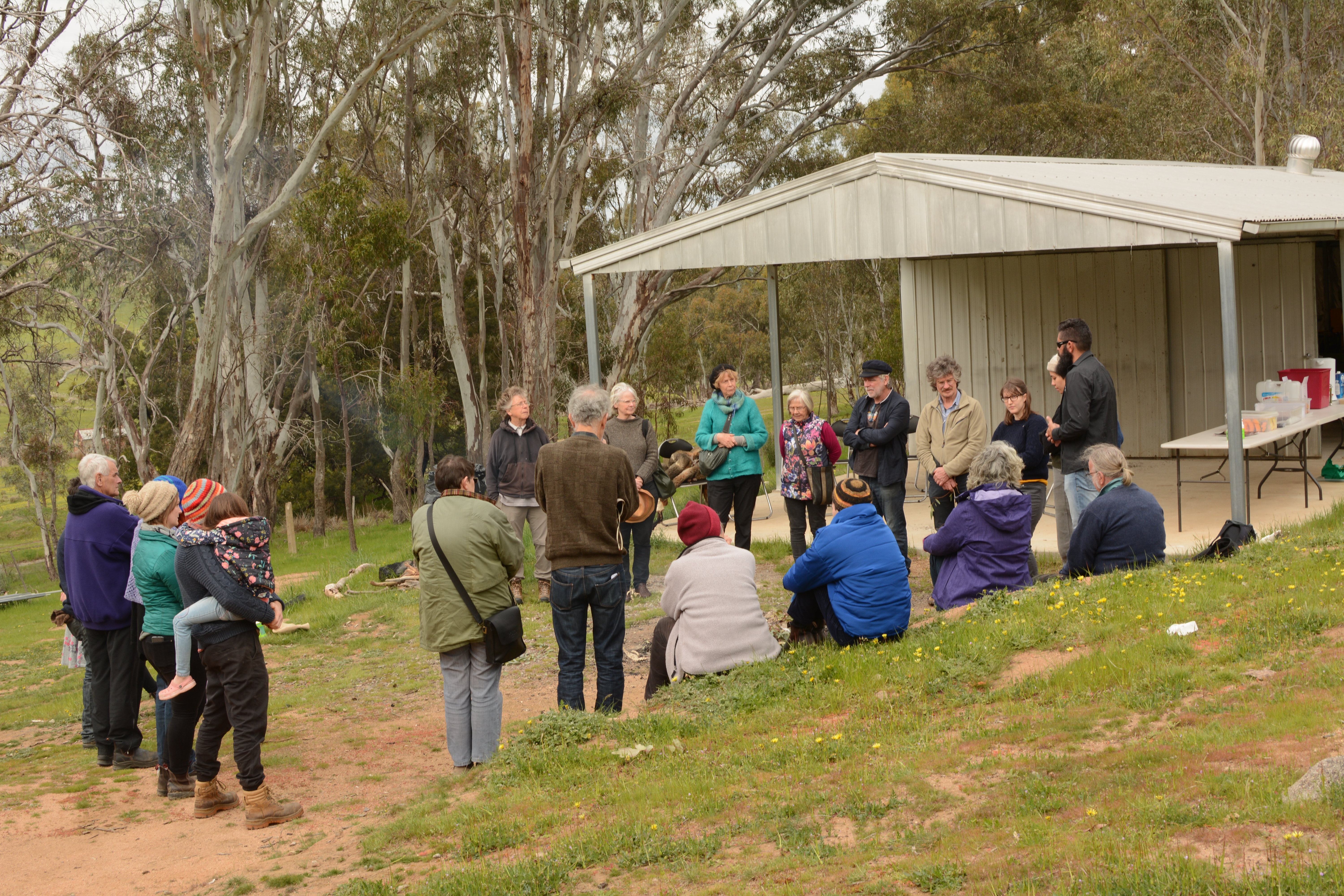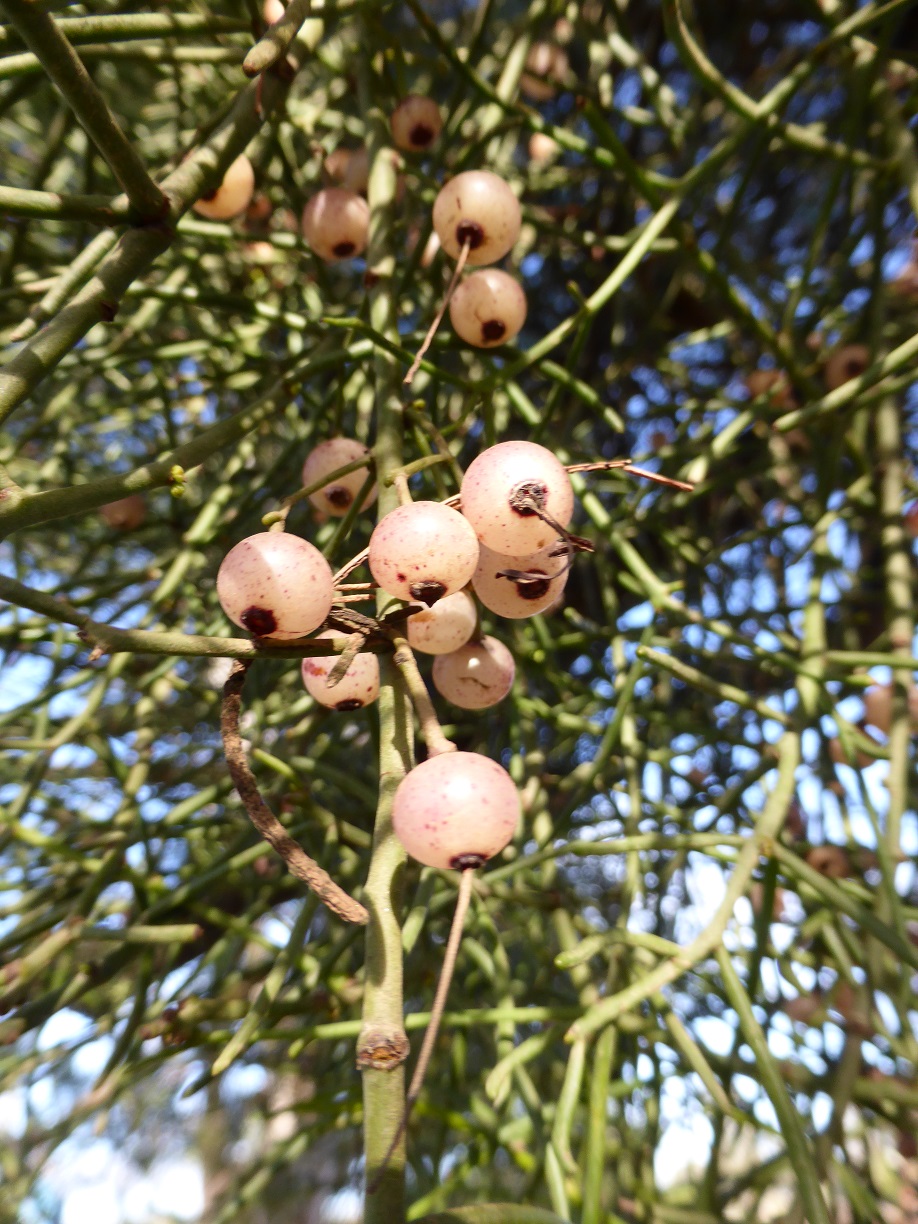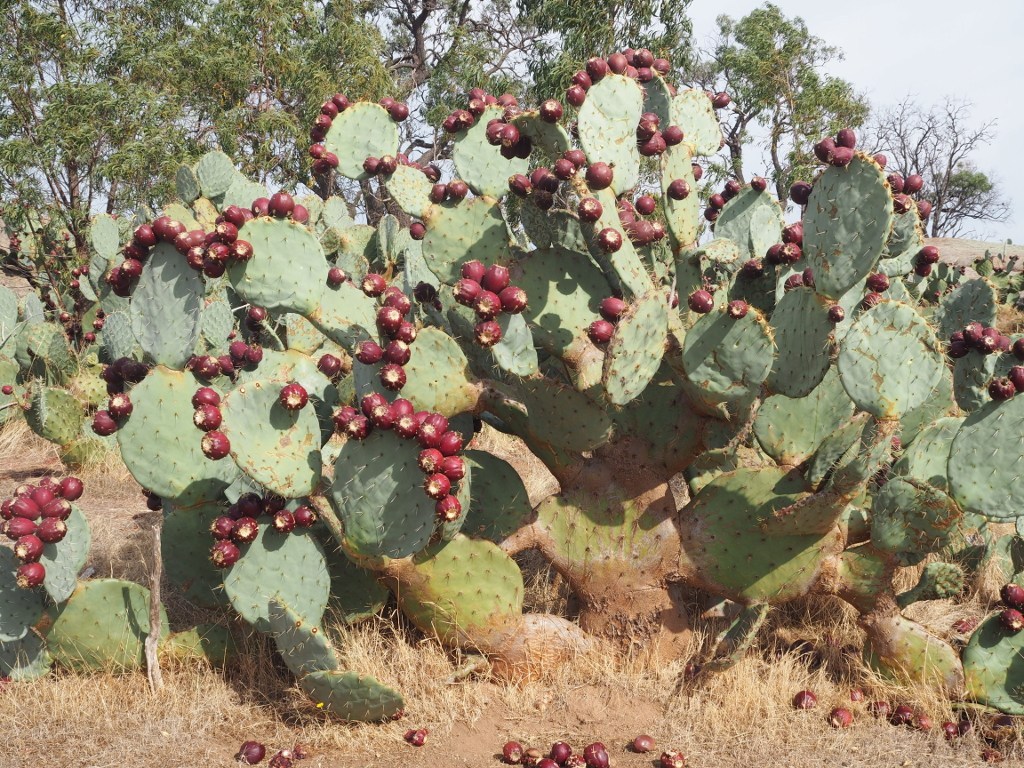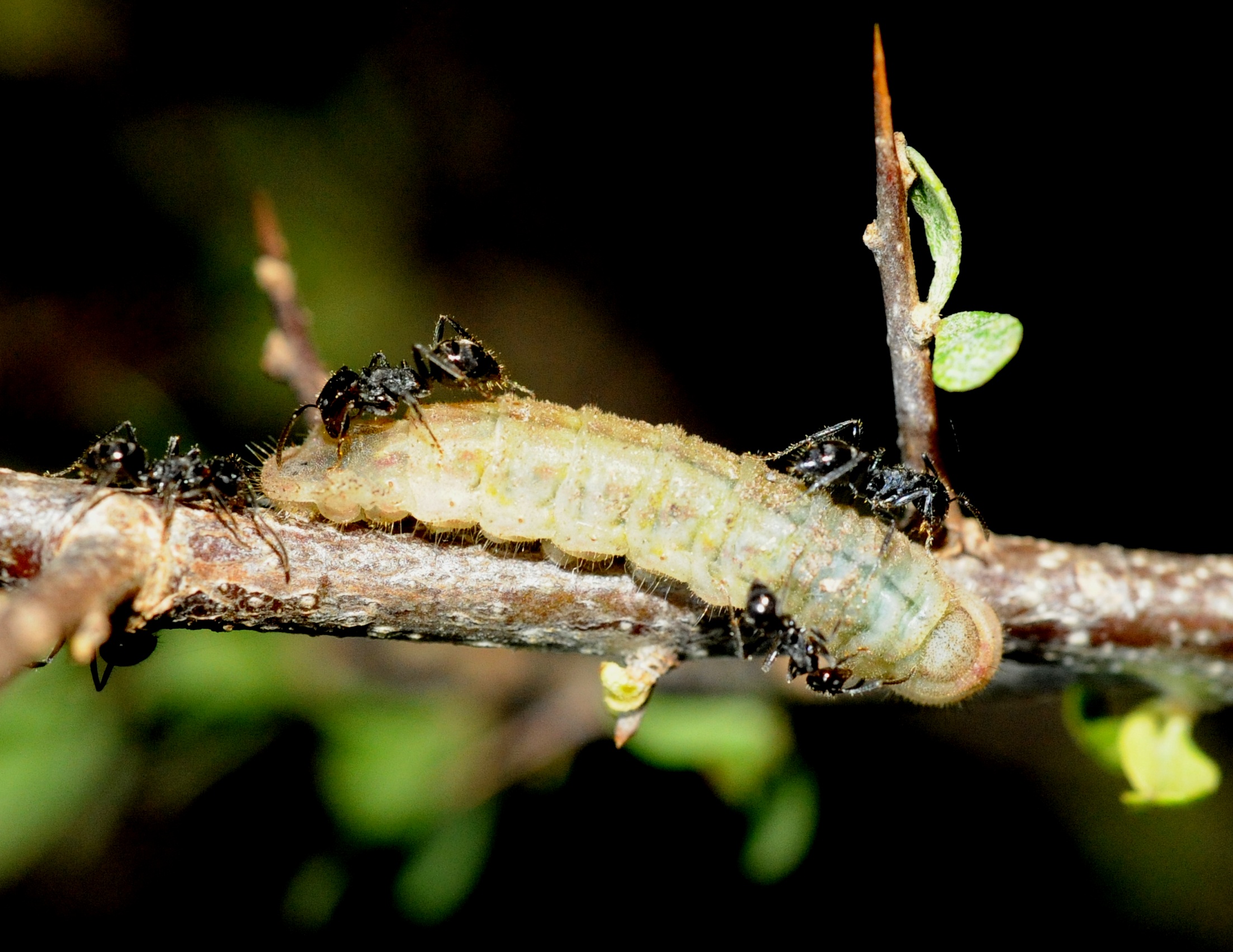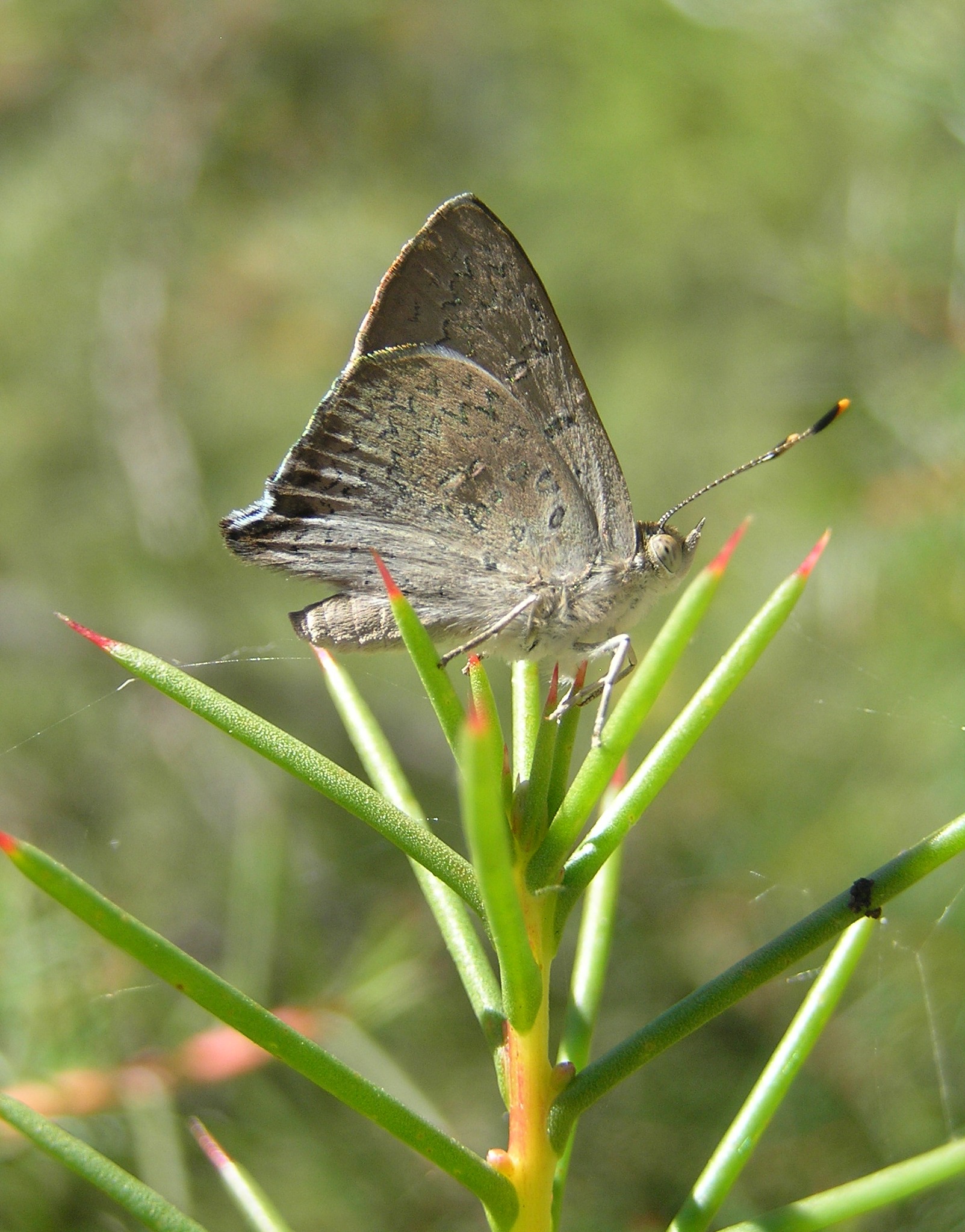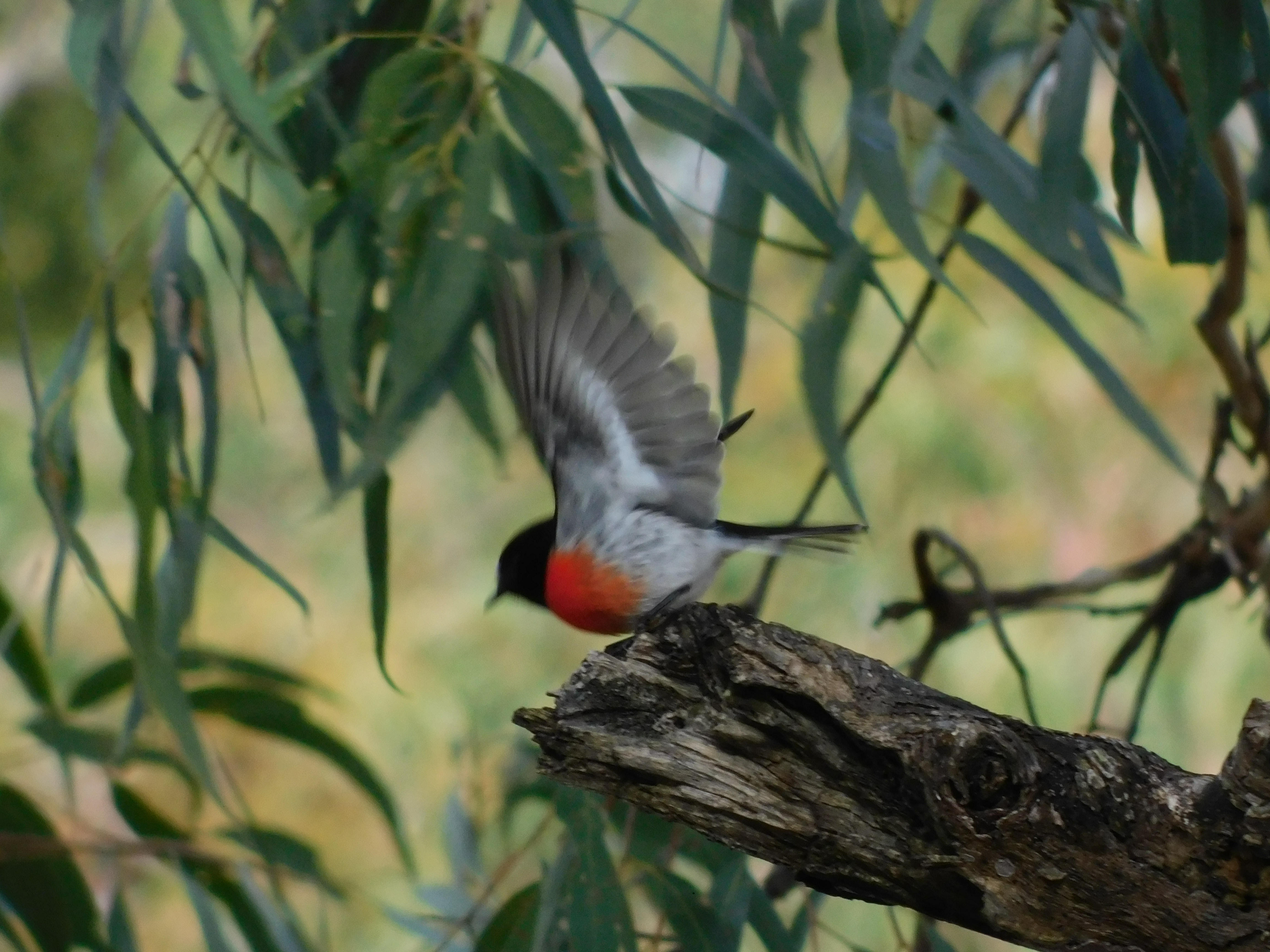Dear deer, we are watching you
Posted on 27 November, 2019 by Ivan
Have you seen feral deer in your local area?
DeerScan is a new free community resource for Australian landholders, community groups and pest controllers. DeerScan can be used to map deer sightings, report problems or damage caused by deer, and document control actions. It can be used to inform your neighbours and local biosecurity authorities about current deer problems. You can use DeerScan to record new (and historical) observations of deer in your local area, as this will help to build a detailed picture of deer populations.
Deer facts:
- Feral deer are becoming a major pest species.
- There are six species across Australia (red, fallow, rusa, sambar, chital and hog).
- Their numbers are increasing.
- Local authorities need your help to map populations and report problems.
- Everyone is encouraged to report all sightings into DeerScan.
DeerScan can be used to record information on:
- Sightings and numbers – Where have deer been seen in your local area?
- Damage – The damage or problems deer are causing.
- Control activities – Locations where deer control has been implemented.
For further information have a look at the Deerscan website (click here) or download the FeralScan App on your smartphone. The process for recording deer sightings is outlined below.
Step 1 Register your details |
|
|
|
Register your details in DeerScan or simply record information with a valid email address. You do not need to register but it will make it easier for you to view your own data, and enable the FeralScan team to keep you informed about how your data is helping to control feral deer in your local area.
|
Step 2 Map your observations |
|
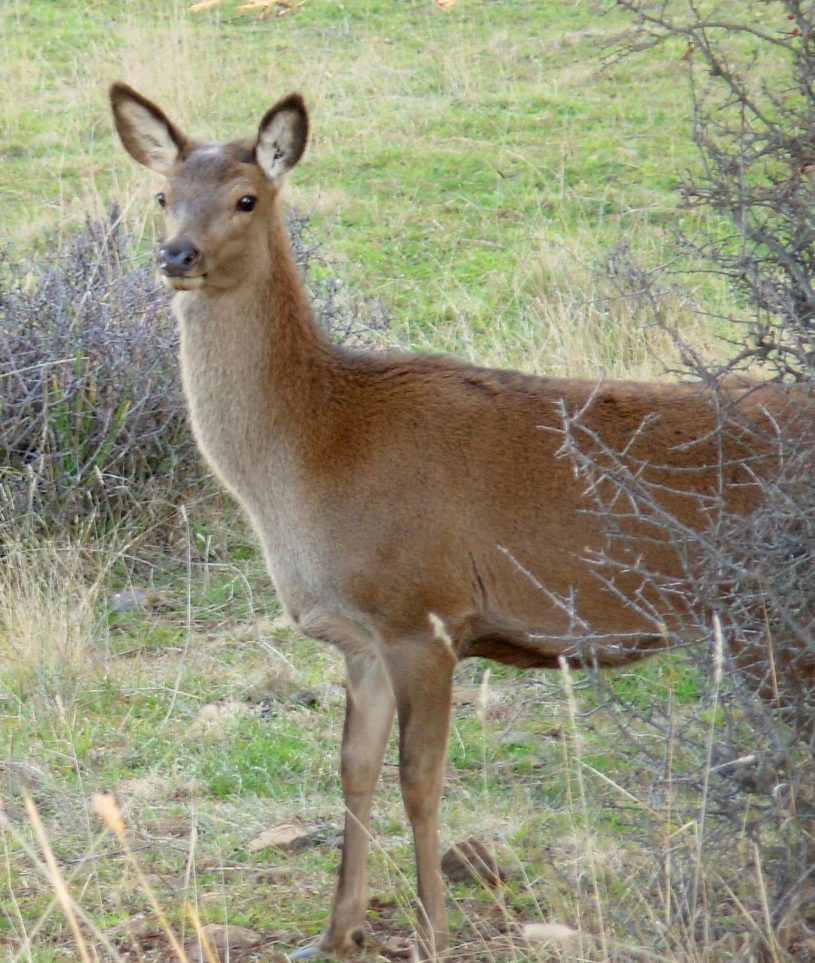 |
Record wherever you see deer, what species you have seen, what problems they have caused, and control activities such as ground shooting. To enter data, zoom to your current location and place a marker on the map, then insert the details of your observation in the form provided. Smart phone users can use the App to enter data while in the field.
|
Step 3 Submit your record |
|
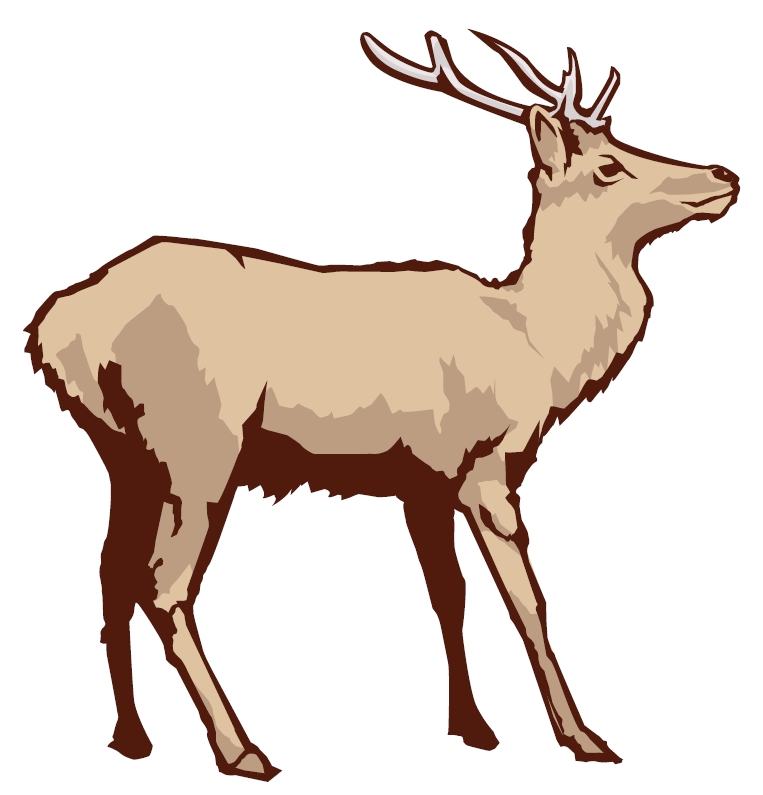 |
Submit your record and view the details in the All Sightings or My Data tabs. View other observations in your local area entered by other community members. You can also upload your photos to the Photo Gallery and they will display on the website.
|
Information you enter about feral deer and their impacts in your local area will help local biosecurity authorities to manage feral deer populations to reduce the damage they are causing. Feral deer are becoming a major pest throughout Australia so your input is important!
Butterflies and biodiversity celebrated
Posted on 25 November, 2019 by Ivan
A strong crowd of a few hundred people turned out for perfect weather and an excellent, first-ever Butterfly Celebration Day in Castlemaine on the 17 of November 2019. The free event was in the Castlemaine Botanical Gardens, Victoria, with the community invited to bring a picnic and help celebrate the special story of the threatened Eltham Copper Butterfly, Notoncus ants and Sweet Bursaria plants that make the magic in our local bushland.
Connecting Country provided information and free native plants to the attendees who visited our information stall throughout the day, as well as a base for guided walks through the nearby butterfly habitat. The celebration day was possible with a grant from the Mount Alexander Shire Council. Castlemaine Landcare Group supported local choreographer Vanessa Case and musician Andy Rigby to work with local primary school students to tell the butterfly’s story in movement and music.
This entertaining and educational event featured a Welcome to Country, local musicians, community choirs and a preschool storytelling and craft workshop. Local ecologists Karl Just and Elaine Bayes conducted tours of butterfly habitat north of the gardens, and gave the keen attendees a great overview of the complex symbiotic relationship between the Eltham Copper Butterfly, its preferred habitat of Sweet Bursaria plants and its attendant Notoncus ants.
Another highlight of the day was a visit from David Crosby, the person who published the first scientific description of the Eltham Copper Butterfly as a clearly defined sub-species, back in 1951. During the 1980s he also made an inventory of butterfly habitat for the Melbourne area. David began collecting butterflies as a boy in the 1940s. His comprehensive butterfly collection of 13,000 specimens, included many from areas of habitat now lost to development, is now in the Australian National Insect Collection.
An important part of protecting the Eltham Copper Butterfly is monitoring to record where it currently exists in the Castlemaine area. If you would like to get involved with butterfly monitoring there are three monitoring events during December 2019. Details are provided below. For more information contact Connecting Country or click here.
Eltham Copper Butterfly monitoring events:
- 12-4 pm Sunday 1 December 2019. Location: Water tank on Hunter Track, top end of Hunter Street, Castlemaine – click here for map.
- 12-4 pm Sunday 15 December 2019. Location: Parking spot just north of where golf course intersects with Kalimna Tourist Road, Castlemaine – click here for map.
- 12-4 pm Saturday 28 December 2019. Location: Corner of Vanstan Road and Lawson Parade, behind Castlemaine Secondary College, Castlemaine – click here for map.
The Butterfly Celebration Day was a tribute to our strong and vibrant community, and care for the local environment. Click below and scroll through to enjoy the photos taken by Ivan Carter on the day.
Yarn at Yapenya – Traditional Owners and Landcarers
Posted on 25 November, 2019 by Asha
Yapenya (aka Mount Barker) is a private property in North Harcourt (Victoria) owned and managed by the Dja Dja Wurrung Clans Aboriginal Corporation (DDWCAC). On Sunday 29 September 2019, around 35 Landcare volunteers from the Mount Alexander region and Trent Nelson from DDWCAC gathered around the campfire at Yapenya.
We started with a Welcome to Country and smoking ceremony from Trent, while the cockatoos watched on from the eucalypts nearby. Everyone then settled in to a good two hours of talking about our connection to the land, and ways to better work together and support each other to care for it. We shared a little afternoon tea, and then went on a wander with Trent while he showed us a bit more of beautiful Yapenya.
Attendees agreed it was an empowering afternoon of connecting and sharing ideas for working together to care for country. One participant said, ‘It felt very special to be part of the day… It was inspiring to hear Trent talking about his vision for the land. I went straight out and bought a yam daisy plant for my garden!’
So, what can you do? If you’re a Landcarer or a landholder wanting to care for the land in line with DDWCAC’s values, here are a few simple actions suggested on the day:
- Plant native food and fibre plants – such as Murnong (Yam Daisy) and Kangaroo Grass.
- Use Dja Dja Wurrung language where possible – for example when on country or at meetings. Stay tuned for a dictionary of words to start with.
- Read the ‘Dja Dja Wurrung Country Plan 2014-2034’ and think about which goals you can help achieve. To download the plan – click here.
Also, you may like to watch the beautiful video called ‘Leanganook: His teeth’, in which Trent speaks about Leanganook (Mount Alexander) and its importance to Dja Dja Wurrung and Taunurung people. To view the video – click here.
A huge thank you to Trent and DDWCAC for working with Connecting Country to organise this ‘Yarn at Yapenya’ gathering, and to everyone who came with open spirit and made it such a worthwhile afternoon. Thanks also to John Walter for taking and sharing his photos from the day.
This event was funded by the North Central Catchment Management Authority through the Victorian Landcare Program, as part of Connecting Country’s ‘Landcare Connections’ project.
Sounds, celebrities and fine food – our 2019 AGM!
Posted on 21 November, 2019 by Ivan
On Saturday 16 November 2019, 75 people gathered at Campbells Creek Community Centre to enjoy an afternoon of formalities and hear an excellent presentation from local soundscape ecologist and environmental thinker, Andrew Skeoch. We celebrated the hard work and achievements of Connecting Country’s past decade with presentations from staff and our chairperson Brendan Sydes, as well as updating the audience on our current funding shortfall. We would like to warmly thank our presenters and all the committee members, staff and volunteers who assisted with the event, which was very well received based on feedback.
By far the biggest star of the show, was the amazing and intriguing presentation from celebrity scientist Andrew Skeoch (yes, he has given a TEDx talk! – click here). Andrew is one of our best-known nature sound recordists and works from a desire to address the fundamental question of our human relationship with the living biosphere. Andrew presented some interesting patterns in birdsong and provided the keen audience with some extraordinary spectrograms.
Andrew presented what birdsong looks like in real-time stereo spectrograms (photo: Sarah Koschak)
Our AGM was short and sweet, and all of our committee members were re-elected for another year! The hard-working Connecting Country committee must be thanked for their considerable strategic and practical contributions to our organisation.
Elected members of Connecting Country’s 2019-20 committee of management are:
- President: Brendan Sydes
- Vice President: Saide Gray
- Treasurer: Max Kay
- Secretary: Marie Jones
- Ordinary member: Karoline Klein
- Ordinary member: Malcolm Trainor
- Ordinary member: Christine Brooke
- Ordinary member: Deborah Wardle
AGM minutes will be circulated to members and available on request. Stay tuned for an upcoming blog post with more details from Andrew’s talk. If you would like a copy of Connecting Country’s annual report for 2018-19 – click here.
Please enjoy this gallery of some of the smiling faces at our AGM. Special thanks to Johnny Baker for generously donating their delicious pastries, Vicki Edwards for the photos, and all the volunteers that generously helped with preparations, food and packup.
Cactus Warriors AGM and Plains-Wanderer talk: 24 November 2019
Posted on 20 November, 2019 by Ivan
Our partners, the Tarrangower Cactus Control Group, are holding their Annual General Meeting along with a talk on the critically endangered, fascinating Plains-Wanderer bird. Here are further details provided by the Cactus Warriors.
The Cactus Warriors have, yet again, had a very rewarding year destroying many thousands of Wheel Cactus plants in our local environment and increasing awareness about this noxious weed in our community. The Tarrangower Cactus Control Group would like to thank the many landowners and volunteers for their dedicated work and wonderful results.
The Cactus Warriors are holding an end of year celebration to reward our ‘warriors’, including an exciting presentation and free lunch. The guest speaker, committee member Bec James, is a Natural Environment Program Officer with the Department Environment, Land, Water and planning, and Secretary of the Victorian Weed Society. And for something completely different, Bec will present about the project she’s currently working on to help save the critically endangered Plains-Wanderer bird in Northern Victoria.
We invite all past, present and future ‘cactus warriors’ to join us at 11:30 am on Sunday 24 November 2019 to hear our special guest speaker, followed by a delicious lunch. No RSVP is required. Please join us in the Band Room, Maldon Community Centre, 6 Francis St, Maldon VIC. We’ll have a very quick AGM at 11.00 am, before the presentation, which everyone is also welcome to attend.
For more information about Wheel Cactus, and how to control this invasive species, please watch the video below from the Cactus Warriors.
Exploring the colour of wildflowers (and the joy of surprises)
Posted on 19 November, 2019 by Ivan
Getting out and about reminds us of just how many lovely wildflowers and things there are happening in the bush, even as the weather warms up! We are blessed to live in a region with large tracts of public land with woodland wonders aplenty, and now is a great time to get out and see some of the vivid and subtle colors our bushland has to offer. One of our Landscape Restoration Coordinators, Bonnie Humphreys, has kindly outlined some of the native species that may still be flowering and on show over the next few weeks, including a few surprises below!
- Bush Peas (Pultenaea sp.) and Parrot Peas (Dillwynia sp.) are flowering.
- Silver Wattle (Acacia dealbata) is laden with pods at the moment, hinting at a good year for seed production.
- Black Wattle (Acacia mearnsii) is in flower with lemony yellow blooms. Some can be seen from the Forest Creek bridge on Duke St, on the right hand side as you head towards Chewton.
- Chocolate Lilies (Arthropodium strictum) and Sticky Everlastings (Xerochrysum viscosum) are looking spectacular.
- Look out for beautiful white flowers from Sweet Bursaria (Bursaria spinosa) and White Marianth (Rhytidosporum procumbens).
- Creamy Candles (Stackhousia monogyna) are flowering. These have a lovely perfume which is most prevalent at night indicating a preference for night pollinator such as moths.
- Cats Claw Grevillea or Alpine Grevillea (Grevillea alpina), some plants are still flowering away. There are many different colour forms in this plant including green, yellow, red, and then mixes of combinations.
There are many great places for bushwalking on public land in our region, including Kalimna Park (just a short walk from Castlemaine town centre), Rise and Shine Bushland Reserve (Sandon), Monk Track in the Dry Diggings National Park (Chewton), Muckleford State Forest, and Guildford Bushland Reserve. View excellent ground-truthed maps of many of these areas by local cartographer Jase Haysom by clicking here. Local bird expert Damian Kelly’s book Castlemaine Bird Walks is another great resource for bird and wildlife outings in the bush.
Before the heat takes the color and vibrancy out of these treasures, be sure to explore some of the abundant nature hotspots in our region. Scroll down to see pictures below of some colourful characters from our local bush.

Chocolate Lilies (Arthropodium strictum) and Sticky Everlastings (Xerochrysum viscosum). Photo: Bonnie Humphreys

Muckleford bush with Parrot Pea (Dillwyina sp.), Cats Claw Grevillea (Grevillea alpina), Murnong or Yam Daisy (Microseris walteri), Grey Everlasting (Ozothamnus obcordatus) and Chocolate Lilies (Arthropodium strictum). Photo: Bonnie Humphreys

Keep an eye out for nesting birds. Here’s an Owlet Nightjar fledgling checking out the world! Photo: Bonnie Humphreys
Fruit Fly Workshops in November 2019
Posted on 19 November, 2019 by Jacqui
Learn about how you can fight fruit fly at a series of free workshops.
Mount Alexander Shire Council is working with Harcourt Valley Fruit Fly Action Group to raise awareness of Queensland Fruit Fly and steps to prevent an outbreak through a series of workshops for gardeners, backyard fruit and vegetable growers, schools, small scale farms and horticultural enterprises.
The sessions will be held in Maldon, Newstead and Castlemaine in late November 2019. Harcourt Valley Landcare Group will host a session in Harcourt in February 2020.
The workshops will cover fruit fly identification, traps, what to do if there is an outbreak, and more. Guest speakers will also share first-hand experience of the impact of fruit fly.
Session details
Newstead fruit fly workshop
When: 1.00 pm to 3.00 pm, Thursday 28 November 2019
Where: Newstead Community Centre, Lyons St, Newstead VIC
Maldon fruit fly workshop
When: 6.00 pm to 8.00 pm, Thursday 28 November 2019
Where: Maldon Community Centre, 6 Francis St, Maldon VIC
Castlemaine fruit fly workshop
When: 10.00 am to 12.00 noon, Friday 29 November 2019
Where: Town Hall, Lyttleton Street, Castlemaine VIC
For bookings contact: Lynne Meldrum at the Environmental Health team at l.meldrum@mountalexander.vic.gov.au or call (03) 5471 1866.
Mistletoe presentation and Newstead Landcare AGM – 21 November 2019
Posted on 18 November, 2019 by Frances
Newstead Landcare Group is very pleased to announce a presentation by Professor David Watson of Charles Sturt University, who will reveal the mysteries of mistletoes. This is an enigmatic group of plants. Lacking roots, depending on other plants for their survival and relying on animals for dispersal, they’ve inspired a range of beliefs throughout the world. Some people regard them as magical and endowed with special powers, others as destructive weeds that devalue native habitats. Professor Watson will talk about his two decades of research on these plants and share his emerging view of these plants as beautiful native wildflowers that support wildlife and boost
productivity.
The presentation will be followed by Newstead Landcare Group’s brief annual general meeting (AGM) with elections for President, Secretary and Treasurer.
Mistletoe presentation and Newstead Landcare AGM
When: 8.00 pm on Thursday 21 November 2019
Where: Newstead Community Centre, 9 Lyons St, Newstead VIC
All are welcome to attend and gold coin donations would be appreciated. David will also have copies of the newly released second edition of his book ‘Mistletoes of Southern Australia’ for sale.
There is no need to book for this event, please contact Frances Cincotta for further information on 03 5476 2691.
Be involved with butterfly monitoring – Saturday 16 November 2019
Posted on 14 November, 2019 by Ivan
This Saturday will be the first of four Eltham Copper Butterfly monitoring events for 2019, with local ecologists and enthusiasts Elaine Bayes and Karl Just training volunteers in how to conduct the vital monitoring needed to help this threatened species.
This is a fantastic opportunity to get out in the bush, learn more about your local environment, and collect some really important data to help protect this beautiful threatened species. You might even discover a new population of this special butterfly!
Castlemaine’s Kalimna Park is home to the largest remaining population of the threatened Eltham Copper Butterfly in the world. However, we don’t know how many butterflies there currently are, and its entirely possible that other, undiscovered populations exist around the Castlemaine area. The aim is to support interested community members to learn how to monitor with expert guidance, conduct more monitoring and (hopefully) discover new populations.
Eltham Copper Butterfly monitoring
When: 12.00 -4.00 pm on Saturday 16 November 2019
Where: Kalimna Park Rotunda, top of Urquhart Street, Kalimna Tourist Road, Castlemaine VIC – click here for map
Bring: water, a hat, suitable clothing (long pants, sturdy shoes and weather-appropriate gear) and snacks to keep you going
There is no need to book, just come along.
Everyone is invited to get involved. Monitoring isn’t difficult but you will need:
- A reasonable level of physical fitness, as monitoring involves walking off-track through the bush, often in warm weather.
- A positive attitude and willingness to learn.
- Ability to read maps, follow simple procedures and record sightings.
To learn more about this wonderful and interesting small butterfly, including ecology, distribution and information on how to identify this species from similar look-alike butterflies – click here.
It would be terrific to find some new populations in our region and this is the perfect opportunity to survey some excellent butterfly habitat.
There will be three more over the next few weeks, covering different areas around Castlemaine:
- 12.00 -4.00 pm on Sunday 1 December 2019. Location: Water tank on Hunter Track, top end of Hunter Street, Kalimna Park, Castlemaine VIC – click here for map.
- 12.00 -4.00 pm on Sunday 15 December 2019. Location: Parking spot just north of where golf course intersects with Kalimna Tourist Road, Kalimna Park, Castlemaine VIC – click here for map.
- 12.00 -4.00 pm on Saturday 28 December 2019. Location: Corner of Vanstan Road and Lawson Parade, behind Castlemaine Secondary College, Castlemaine VIC – click here for map.
You don’t need to attend all these events to be a monitor. Once you understand the monitoring method and feel confident you can identify an Eltham Copper Butterfly, you’re welcome to do your own monitoring and report sightings.
If you’d like to get involved in Eltham Copper Butterfly monitoring, please just come along to a monitoring event, or for further information contact Ivan at Connecting Country (ivan@connectingcountry.org.au).
Friends of Kalimna Park AGM – 16 November 2019
Posted on 13 November, 2019 by Ivan
A reminder from our partners at Friends of Kalimna Park, that this weekend they will be launching the updated ‘Kalimna Circuit Track’ brochure on Saturday 16 November at 2.00 pm, as part of their Annual General Meeting.
This brochure complements the work done to the walking track, which now has 16 numbered marker posts and directional arrows to help with navigation. All members and supporters of the Friends are invited to come and walk around the track, followed by afternoon tea.
The walk will be preceded by the Friends of Kalimna Park AGM at 1.00 pm. All members are welcome to come to the AGM and new committee members are always welcome.
The location for both events is the beginning of the Kalimna circuit track on Kalimna Tourist Rd, Castlemaine VIC. This point is located at a pullover on the western side of the Kalimna Tourist Rd between the Mount Alexander Golf Course and the big bend in the road.
Please bring a chair to sit on if you are coming to the AGM and BYO beverages.
For more information on Friends of Kalimna and their AGM, please visit the following link.
‘Hearing our place’ with Andrew Skeoch and AGM 2019 – BOOK NOW!
Posted on 13 November, 2019 by Ivan
We would like to remind our valued Connecting Country members and the wider community to book now for our 2019 Annual General Meeting this weekend. Our very special guest, Andrew Skeoch, will speak about ‘Hearing our place’ in nature.
Frances Howe, Connecting Country Director, says ‘Andrew Skeoch is an educator, naturalist, environmental thinker and one of Australia’s best-known nature sound recordists. From his bush home near Newstead, he has journeyed over the last 25 years to remote locations in Asia, India, America, Europe, Africa and the Pacific in search of some of our planet’s most beautiful and fascinating sounds.
Combining this field experience with a deep curiosity, Andrew explores the crucial role of sound and communication in nature and evolution. He weaves the latest scientific understandings into a fascinating celebration of the natural soundscape around us.
His intriguing presentation will focus on our box ironbark birdsong and natural soundscapes, and will have you appreciating our local bushlands from an entirely fresh perspective.’
The AGM will include a brief presentation from staff and committee members about Connecting Country’s achievements over the last decade, to allow supporters old and new to hear what Connecting Country does and our plans for the coming year.
This free event is at 4.00 – 6.00 pm on Saturday 16 November 2019 at Campbells Creek Community Centre (45 Elizabeth St, Campbells Creek VIC).
Afternoon tea will be provided from 3.30 pm.
Please RSVP online (click here) by 13 November 2019 for catering purposes. If you have any questions, please email asha@connectingcountry.org.au or call (03) 5472 1594.
Click here to download the flier.
Click here to download a committee nomination form.
Click here to download a membership application.
Welcome back Bonnie!
Posted on 12 November, 2019 by Frances
We’d like to welcome back one of our most experienced super star staff members, Bonnie Humphreys, who recently returned from 12 months parental leave. Bonnie is returning to the role of Landscape Restoration Coordinator and brings a wealth of local knowledge and experience to the Connecting Country team. Her ability to understand people and plants is second to none, and we are excited to announce that she will be job sharing with our current Landscape Restoration Coordinator, Jacqui Slingo, at two days a week each. Jacqui has done an outstanding job in this role while Bonnie was on leave. We are very lucky to keep both of them on the team.
Bonnie joined the Connecting Country team as a Project Officer in 2011. She grew up in Bendigo and Castlemaine and has completed a Diploma in Conservation and Land Management at Bendigo TAFE. Bonnie has a special interest in and extensive knowledge of native flora and weed ecology.
While on leave Bonnie was busy being a mum to her gorgeous baby girl, but always made time to help Connecting Country with specialist advice when needed.
Thanks Bonnie and welcome back to the team!
Bring our local bush into your garden!
Posted on 11 November, 2019 by Jacqui
This Sunday 17 November 2019, Maldon Urban Landcare Inc. is holding a talk about wildlife friendly gardening using local provenance plants. Jacqui Slingo, Connecting Country’s Landscape Restoration Coordinator, will talk about the benefits of using local provenance plants in your garden, including opportunities to get up close with our local plants and animals, reducing maintenance, input costs and water usage.
Jacqui has worked at Connecting Country since 2018 and is inspired by the commitment of local groups and individuals in restoring the health of local habitats for people, landscapes and wildlife.
Frances Cincotta, from Newstead Natives, will have both local and non-local native plants for sale during the afternoon.
The talk is being held this Sunday 17 November 2019 at 2.30 pm, followed by afternoon tea, in the Maldon Community Centre, Francis St, Maldon, Victoria.
For more information contact Bev Phillips from Maldon Urban Landcare on 0407 770 350 or maldonurbanlandcare@gmail.com
Eltham Copper Butterfly talk in Castlemaine – Friday 8 November 2019
Posted on 7 November, 2019 by Frances
Castlemaine and Bendigo host the largest known area of Eltham Copper Butterfly (ECB) habitat in the world. Given the global decline in insects, it is critical that we protect our Australian species such as the endangered Eltham Copper Butterfly.
Local ecologists Elaine Bayes and Karl Just are guest speakers at the November meeting of the Castlemaine Field Naturalists Club. They will discuss the current distribution of ECB, the amazing relationship ECB has with Notoncus ants and the host plant Sweet Bursaria, and the local butterfly monitoring program. There has been little research on the central Victorian populations of ECB over the last decade. Elaine, Karl, and Julie Radford are trying to change this by leading the community in searching for new ECB populations and mapping colonies so we can protect them from planned burns and other threats.

The beauty of the Eltham Copper Butterfly (photo by Elaine Bayes)
Upcoming opportunities for the local community to be involved in studying and saving this species will be provided. Monitoring ECB also provides a great excuse to walk through our stunning bushlands over the summer months when ECB are flying and mating.
The monthly Castlemaine Field Naturalists Club meeting will start at 7.30 pm on 8 November 2019. This month the meeting will be held in the chapel behind the Uniting Church on Lyttleton St, Castlemaine VIC (next door to the Castlemaine Art Museum). All members are all encouraged to attend and, as always, visitors are also very welcome. There is no cost for entry and no need for bookings.
If you are interested in helping Karl and Elaine with the monitoring of this amazing local butterfly over November and December 2019, please click here
Platypus survey in Campbells Creek
Posted on 7 November, 2019 by Ivan
Our partners and good friends at Friends of Campbells Creek Landcare Group have arranged for the Australian Platypus Conservancy (APC) to conduct a Platypus survey at six locations along Campbells Creek, Victoria, in mid-November 2019.
The survey has been funded by Coliban Water. The survey will commence on the evening of Friday 15 November 2019 (depending on appropriate weather conditions), and finish early on Saturday morning. The APC team will be based at the Campbells Creek Community Centre. The first inspection of the nets will be at around 10 pm and continue throughout the night, approximately every two hours.
On Saturday morning at around 7.30 am, the results of the survey will be discussed at the Campbells Creek Community Centre (45 Elizabeth St, Campbells Creek VIC). Interested community members are welcome to join in and see the results. Tea and coffee will be available. In 2020 the APC team will return to conduct a citizen science workshop to present information on the biology and conservation considerations of Platypus and Rakali (native water rat), followed by a practical session on Campbells Creek. We will keep you informed of this event.
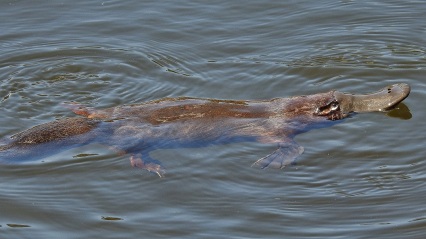
The platypus has a streamlined body and a superficially duck-like bill (photo: APC)
For more information about Friends of Campbells Creek Landcare Group and the Platypus project, please click here.
For more information about the Australian Platypus Conservancy (APC) and the survey methods, please click here.
Free disposal of Wheel Cactus at Maldon Transfer Station
Posted on 30 October, 2019 by Ivan
Here is an update from the Tarrangower Cactus Control Group regarding the disposal of the invasive plant Wheel Catcus (Opuntia robusta) in the Mount Alexander region of central Victoria.
Thanks to renewed funding from Mount Alexander Shire Council, Wheel Cactus plants can again be disposed of FREE at the Maldon Transfer Station. This is a great incentive to dig up Wheel Cactus plants while they’re still small and before they’ve started producing fruit and seeds. Hopefully it will also encourage everyone to remove any outlying plants they see starting to grow in new areas.
Small Wheel Cacti are really easy to dig up because they are very shallow-rooted plants. To help, digging hoes and buckets can be borrowed from the Tarrangower Cactus Control Group. Digging up small plants also reduces the need for the chemical herbicides required when plants are left to grow to maturity.
Alas, there is a limit of one trailer load per property each financial year, because the funding is limited and Wheel Cactus infestations are so widespread across so many properties. However, if you do have more Wheel Cactus plants you’d like to dig up, an alternative solution is to dig a big hole on your property, and dump and bury the weeds on site (also saving you the time, effort and cost of carting to the tip).
What is Wheel Cactus?
A plant native to Mexico, this cactus (Opuntia robusta) is most commonly called Wheel Cactus in Australia. It was probably introduced into our country as a hardy garden plant. This cactus species has a distinct blue-green colour and large, flat, round pads with many short and long spines. The plant is erect and can grow to 3 m tall. It has yellow flowers and dark red fruit in spring-summer, each containing approximately 500 seeds that are spread by animals and water.
This weed is widely established in central Victoria, western New South Wales, and south-eastern and eastern South Australia. It particularly likes to grow on granite outcrops, but also infests woodlands and pastures.
For more information on Wheel Cactus and how to control this invasive species, please click here
Seek and discover
Posted on 30 October, 2019 by Ivan
Have you ever wondered what that mysterious plant might be and don’t have the knowledge or time to consult with a botanical encyclopedia? Meet Seek!
The Seek app is an online social network for nature enthusiasts and is part of an ongoing attempt to involve ordinary people in citizen science projects. Similar to Shazam – an app that allows you to identify music from audio recordings – the Seek app allows you to identify plants and animals from your photos by harnessing image recognition technology. It is still in the early stages of learning many of the native species from this region, but learns from each experience it is exposed to.

The Seek app enables you to take photos of nature and have complex articifical intelligence attempt to identify them. Photo: I-Naturalist
The beauty of this app is that it encourages curious adventurers to become engaged with the wildlife around them. Fun and educational for kids and adults alike, users can earn badges while they learn about each new species they photograph.
We tried this app around Castlemaine in central Victoria to identify plants (and chickens in the community garden adjacent to our office – red jungle fowl, tick!), and found its ability to identify plants depended on the camera’s ability to focus. Moving the camera around at different angles (without taking a photo), helped it recognise exotic plants to genus level. It performed better at identifying exotic species, which is useful if you want to identify weeds. At this point in Seek’s development, it didn’t succeed at identifying any plants to species level. We recommend patience and a good field guide, as we found the app incorrectly identified an Early Black Wattle (Acacia decurrens – native to NSW and a weedy invader of bushland in central Victoria), as Silver Wattle (Acacia dealbata), (Acacia dealbata – a locally indigenous species.
With further development, this could be a powerful app for anyone learning to identify weeds and local native species, and also for recording observations in the landscape. Seek draws from existing data collected from wildlife observations on iNaturalist, in combination with artificial intelligence and neural network technologies. Once downloaded, users are provided with lists of commonly recorded plants, insects, birds and other animals in their area. When a new photo is uploaded, the app’s artificial intelligence analyses the photo to find a match, adds it to the user’s collection, and provides a summary of information from Wikipedia.
![]()
The app software currently recognises 30,000 species, and will continue to improve with further use. The app’s co-founder Scott Loarie explains, ‘The only way we can improve our modeling of species is to get more data, and to do that we need more people outside taking pictures’.
The Seek app doesn’t require any registration to use and doesn’t collect any user data by default, though location data is used to show you the plants and animals in your area. Alternatviely, if an app is not for you, you might be interested to have a look at the Flora of Australia website
You can read more about the Seek app, and to download it for free – click here.
Eltham Copper Butterfly events 2019
Posted on 28 October, 2019 by Frances
Confused about all the exciting things happening with Eltham Copper Butterfly (ECB) around Castlemaine at the moment?
We’re delighted that Castlemaine’s local populations of this threatened butterfly are getting the attention they deserve. Here is a summary of events prepared with help from local ecologist and ECB guru, Elaine Bayes of Rakali Ecological Consulting.
- If you would like to help protect Eltham Copper Butterflies or would simply like a purpose while walking out in the bush, then come and join us in finding where ECB are so that they can be protected from threats.
- If you are just curious and want to learn more about Eltham Copper Butterflies then come along to the Butterfly Celebration Day, ECB monitoring education session or Castlemaine Field Naturalist talk.
- If you would like to become an Eltham Copper Butterfly Monitor and carry out searches either with our group or on your own, then join us on the ECB Monitor Training Events, so that you can learn how to contribute to conservation of the amazing Eltham Copper Butterfly.
2019 Eltham Copper Butterfly events around Castlemaine
| Date | Activity | Further information |
| Friday 8 November 2019 7.30 – 9.00 pm |
Castlemaine Field Naturalists Club talk on ECB with Elaine Bayes Hear general information on ECB biology and monitoring |
Castlemaine Field Naturalists Club click here |
| Saturday 9 November 2019 1.30 – 4.00 pm |
Field trip to Kalimina Park with Castlemaine Field Naturalists Club See ECB habitat and learn method of ECB search |
Castlemaine Field Naturalists Club click here |
| Saturday 16 November 2019 12.00 – 4.00 pm |
ECB monitor training – introduction Receive training day on how to monitor ECB |
Connecting Country click here |
| Sunday 17 November 2019 1.00 – 3.00 pm |
Butterfly Celebration Day at Castlemaine Botanical Gardens Attend family event with art and music and ECB habitat tours |
Castlemaine Landcare Group click here |
| Sunday 1 December 2019 12.00 – 4.00 pm |
ECB monitor training – practical Carry out ECB searches as a group |
Connecting Country Bookings not required For more information click here |
| Sunday 15 December 2019 12.00 – 4.00 pm |
ECB monitor training – practical Carry out ECB searches as a group |
Connecting Country Bookings not required For more information click here |
| Saturday 28 December 2019 12.00 – 4.00 pm |
ECB monitor training – practical Carry out ECB searches as a group |
Connecting Country Bookings not required For more information click here |
Trained ECB Monitors are also invited to join Karl Just and Elaine Bayes on their searches throughout November and December. The following dates are scheduled but may change depending on the weather – contact elaine@rakali.com.au if you would like to be kept updated:
- Friday 15 November 2019
- Friday 29 November 2019
- Thursday 19 December 2019
- Friday 20 December 2019
- Friday 27 December 2019
This year’s events are supported by the Wettenhall Environment Trust and Mount Alexander Shire Council.
Butterfly Celebration Day – 17 November 2019
Posted on 28 October, 2019 by Frances
Bring a picnic and help celebrate the special story of our local Eltham Copper Butterfly, and the Notoncus ants and Sweet Bursaria plants that make magic in our own backyards!
When: 1.00 – 3.00 pm on Sunday 17 November 2019
Where: Castlemaine Botanical Gardens, Downes Rd, Castlemaine VIC
Further information: click here
With funding support from Mount Alexander Shire Council, Castlemaine Landcare Group has sent choreographer Vanessa Case and musician Andy Rigby to work with local primary school students to tell this story in movement and music.
Butterfly Celebration Day will include a Welcome to Country and the Meeting Place, local musicians, community choirs and a preschool storytelling and craft workshop by Rose Demaria. Other local environmental groups will also be there. The community can go on a guided tour of the Butterflie’s habitat, which can be booked to avoid disapointment by clicking here
Connecting Country will be having a stall all day at the event, and will be giving away some Sweet Bursaria plants to early visitors. We will also have information on woodland birds, local plants and education events.

Birdlife Castlemaine November bird walk – 2 November 2019
Posted on 24 October, 2019 by Ivan
You’re invited to join our partners Birdlife Castlemaine on their next bird walk on 2 November 2019 at Muckleford Forest VIC. Here are the details.
We begin our walk in a beautiful gully full of woodland birds. This is a Key Biodiversity Area. Eastern Yellow Robin, Little Lorikeet, Diamond Firetail, Rose Robin and Brown Treecreeper are all nesting in this area, along with with many parrots and honeyeaters. We will walk beside a creek, then uphill to a drier ridge where we should also see a variety of native plants. Later we will travel 1.5 km by car along the South German Track to a dam where we are likely to hear Crested Bellbird see White-browed Babbler and many cuckoos. We may have time for a morning tea at the cars before travelling to the dam.
All ages and levels of experience welcome. This is an easy walk with gentle slopes with mine shafts and a creek nearby, covering approx 4 km, finishing around midday. Leaders are Sue and Peter Boekel. Please note that there are no toilets available.
Location and directions: Travel west from Castlemaine for about 15 km along Pyrenees Hwy (B180), towards Newstead VIC. Turn right down the unsealed Mia Mia Rd – please travel slowly and see how many birds you can spy. After 1.5 m, turn left into Mia Mia Track and in 100 m, two Jacky Winters should be on your right. Travel slowly for 1.5 km and pass South German Track on your right, then in 50 m turn next left up Sullivans Track where we will park on the verge. If required, copy these GPS coordinates into Google Maps search field: -37.0806347, 144.0753035.
When: Saturday 2 November 2019. Meet at Sullivans Track, Muckleford Forest at 9.00 am, or to carpool from Castlemaine meet at 8.30 am outside Castlemaine Community House (former Continuing Ed building), 30 Templeton St, Castlemaine VIC.
Bring: water, snacks, binoculars, hat, sunscreen, sturdy shoes, long pants during snake season, and other weather-appropriate gear.
Important information about walks: Walks will be cancelled if the temperature is forecast to be 35 degrees or more during the walk period, severe weather warnings are forecast, and/or if the day has been declared a Total Fire Ban.
Questions: If you have questions about our walks program, you can email us at castlemaine@birdlife.org.au, or call Judy Hopley (0425 768 559) or Asha Bannon (0418 428 721).








